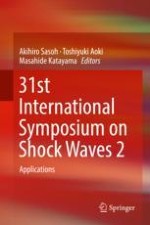2019 | OriginalPaper | Buchkapitel
Shock Waves Can Cure Biofilm Infections In Vivo in Combination with Antibiotics
verfasst von : Akshay Datey, Divyaprakash Gnanadhas, Dipshikha Chakravortty, Gopalan Jagadeesh
Erschienen in: 31st International Symposium on Shock Waves 2
Aktivieren Sie unsere intelligente Suche, um passende Fachinhalte oder Patente zu finden.
Wählen Sie Textabschnitte aus um mit Künstlicher Intelligenz passenden Patente zu finden. powered by
Markieren Sie Textabschnitte, um KI-gestützt weitere passende Inhalte zu finden. powered by
